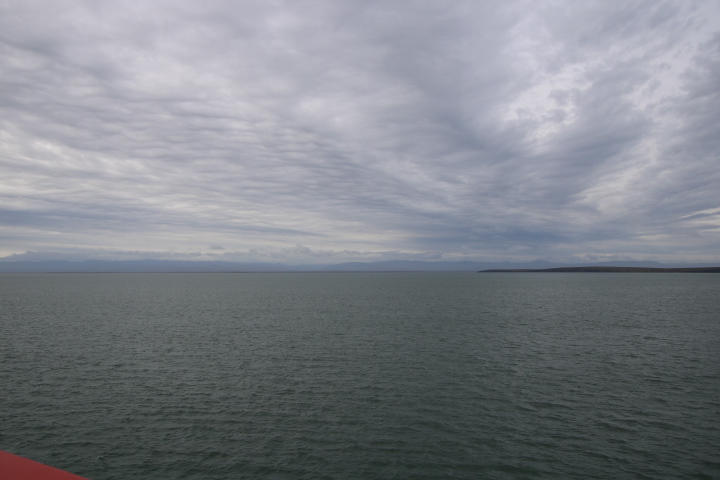We arrived at Herschel Island in the early morning light, with a temperature of 7C, fog, light winds and no swell. Later this morning we expect to be making a landing by Zodiac dinghies.
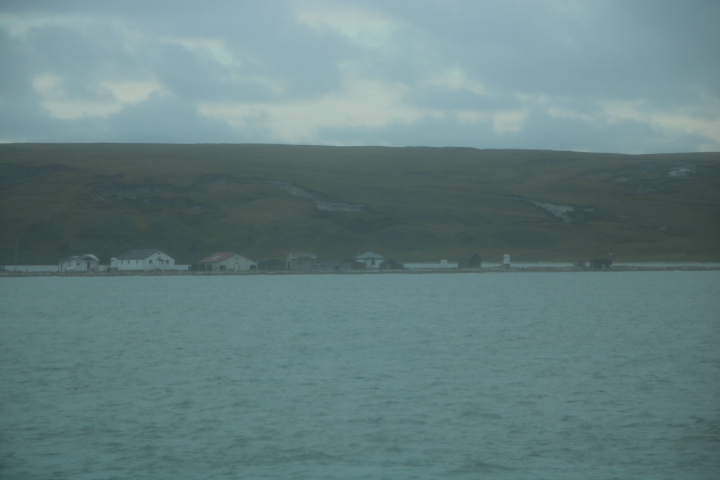
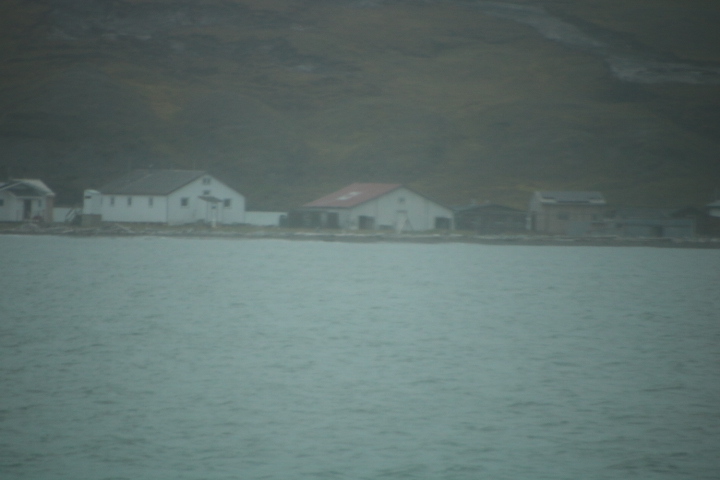
The island is part of National Parks Canada as it is a former whaling station and Inuit settlement with lots of archaeological remains on an island made during the last Ice Age. At 10:15 the prospects for landing were at zero. Weather events, likely to be linked with global warming, had produced flooding at sea level and the spit upon which the settlement was built would have been under serious threat if lots of people would have walked on it. Further dangers were visible in the hillsides behind the settlement. About one week ago the island experienced temperatures of at least 25C which dried out the surface and large cracks developed. Since then, heavy rain permeated the ground through the cracks and has melted the permafrost. Without warning massive pieces of the hillside slip in a process known rotational slumping. The threat of more slumping is just too dangerous and landings were cancelled.
This is very serious for the future of the island. Many Inuit remains have already been lost to the sea and what is left needs protection. Rare archaeological remains of the whaling industry are under threat. The biggest threat, however, is the melting of the tundra which could lead to the present ecosystem being detrimentally changed, the wildlife lost, the flora destroyed and the island could disappear. To end on a promising note the Canadian Government are working on ways to protect the island’s future.
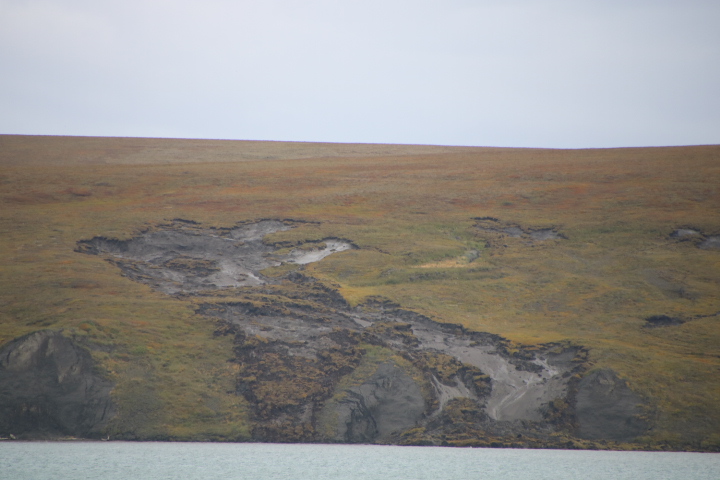

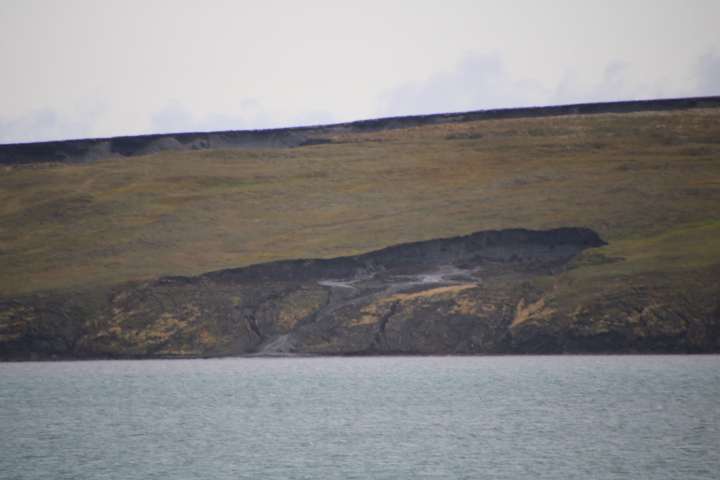
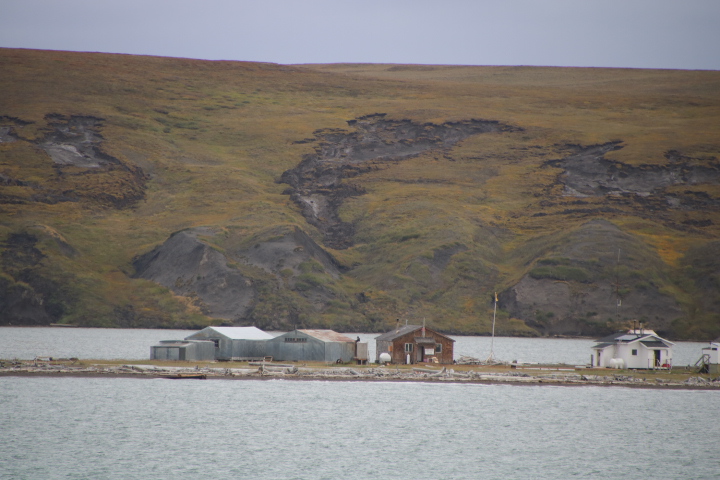
Around lunchtime we set sail eastwards and deep into the NWP.
